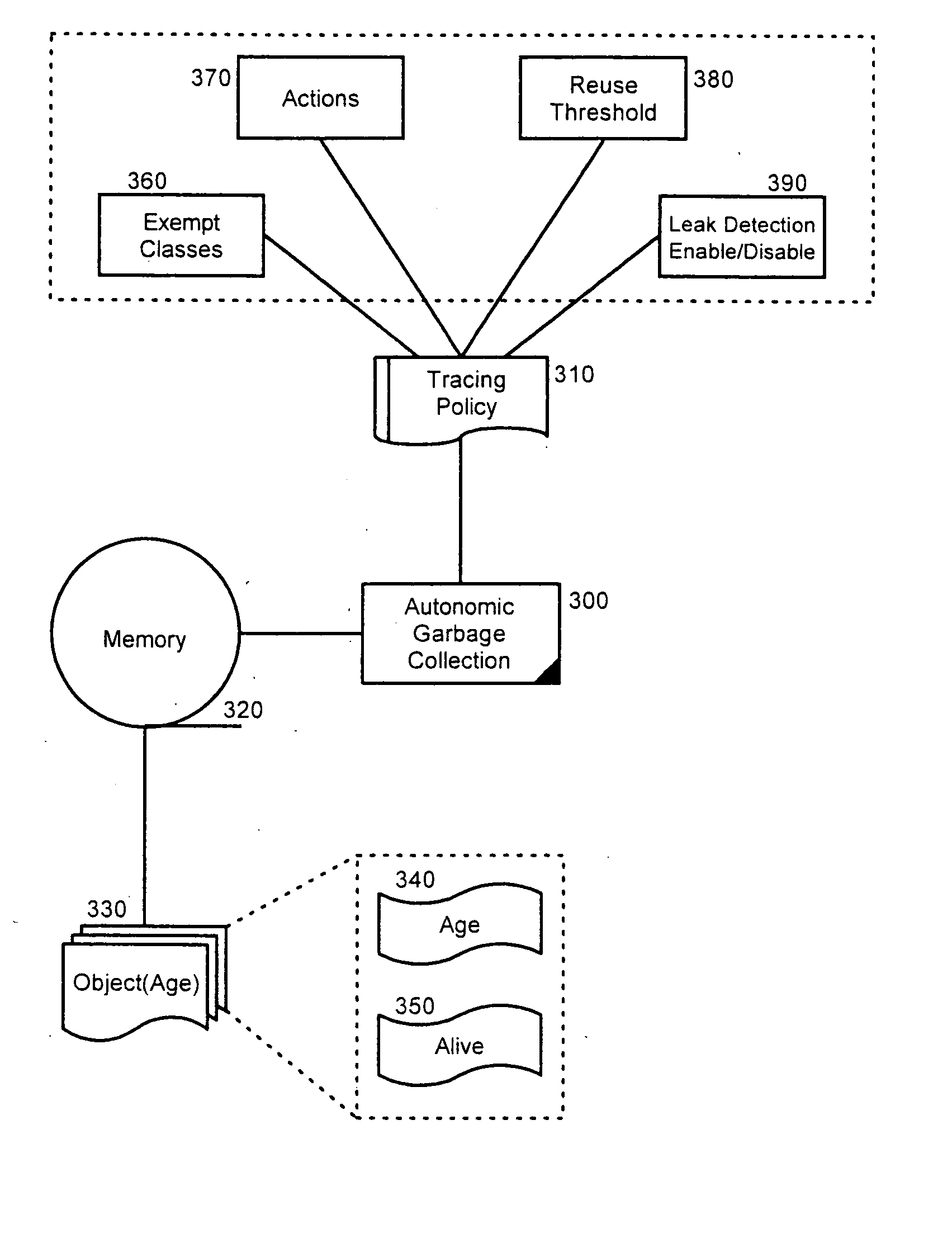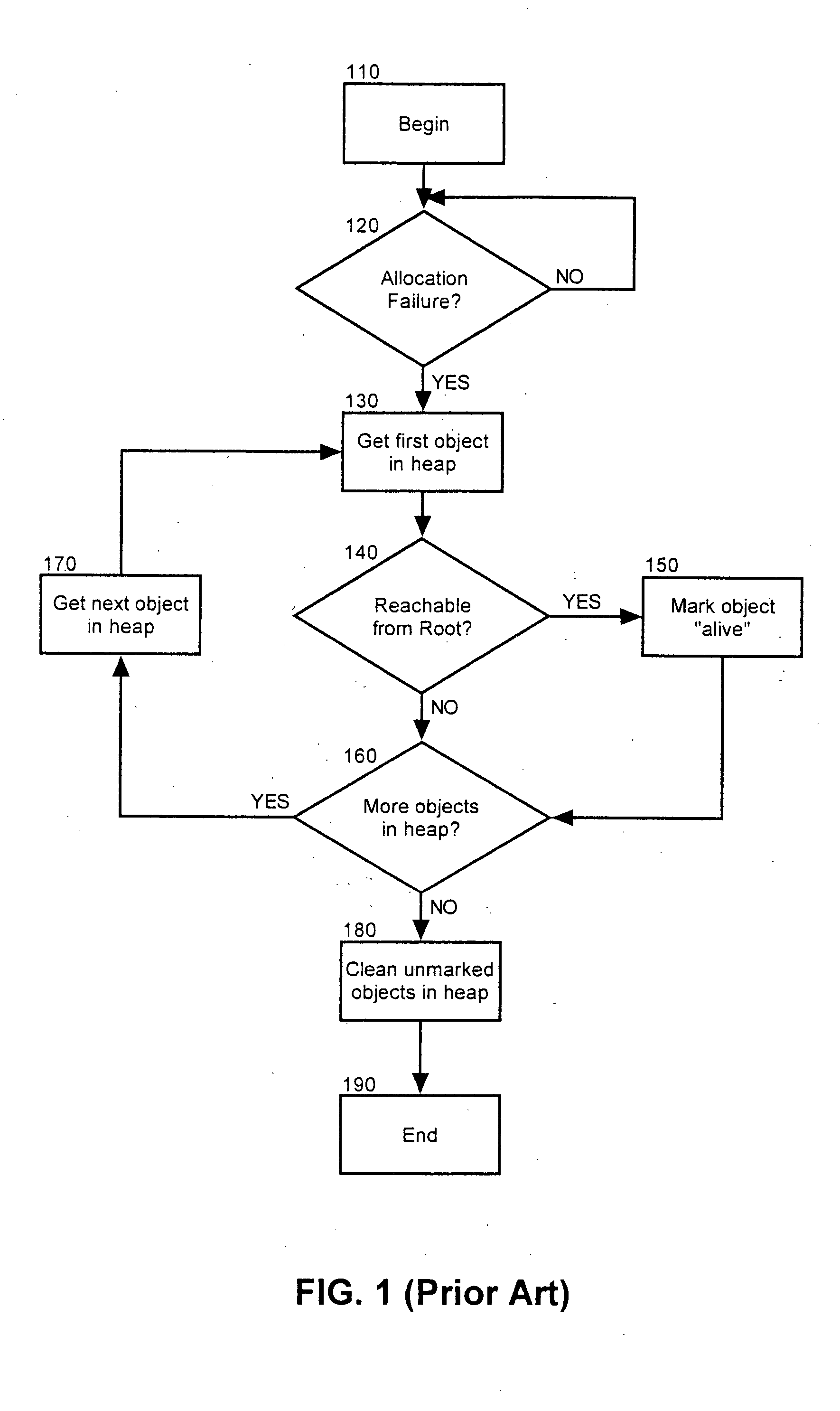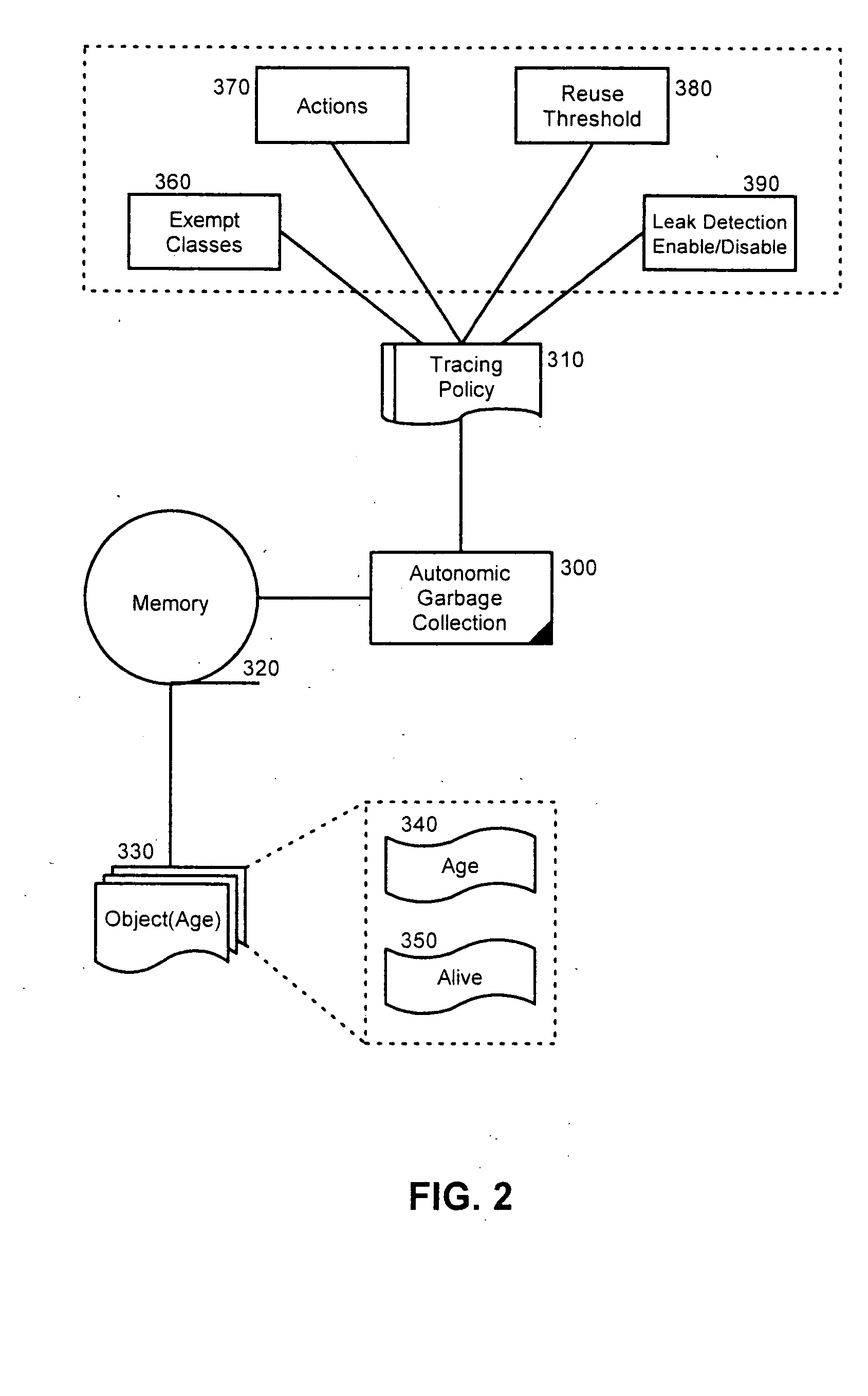Autonomic memory leak detection and remediation
- Summary
- Abstract
- Description
- Claims
- Application Information
AI Technical Summary
Benefits of technology
Problems solved by technology
Method used
Image
Examples
Embodiment Construction
[0019] The present invention is an autonomic memory leak detection and remediation system, method and apparatus. In accordance with the present invention, loiterers in memory can be identify based upon objects in memory which are referenced by other live objects in memory, but which have no other use. Objects can be exempted from the remediation process based upon a pre-specified configuration. Moreover, once detected, loiterers can be acted upon variably depending upon the terms of the pre-specified configuration. Actions can range from reporting the loiterer in a heap dump to purging the loiterer through garbage collection.
[0020]FIG. 2 is a block diagram illustrating an autonomic garbage collection system configured in accordance with a preferred aspect of the inventive arrangements. The system can include at its focal point, an autonomic garbage collection process 300 programmed according to the present invention as described herein. The autonomic garbage collection process 300 ...
PUM
 Login to View More
Login to View More Abstract
Description
Claims
Application Information
 Login to View More
Login to View More - R&D
- Intellectual Property
- Life Sciences
- Materials
- Tech Scout
- Unparalleled Data Quality
- Higher Quality Content
- 60% Fewer Hallucinations
Browse by: Latest US Patents, China's latest patents, Technical Efficacy Thesaurus, Application Domain, Technology Topic, Popular Technical Reports.
© 2025 PatSnap. All rights reserved.Legal|Privacy policy|Modern Slavery Act Transparency Statement|Sitemap|About US| Contact US: help@patsnap.com



